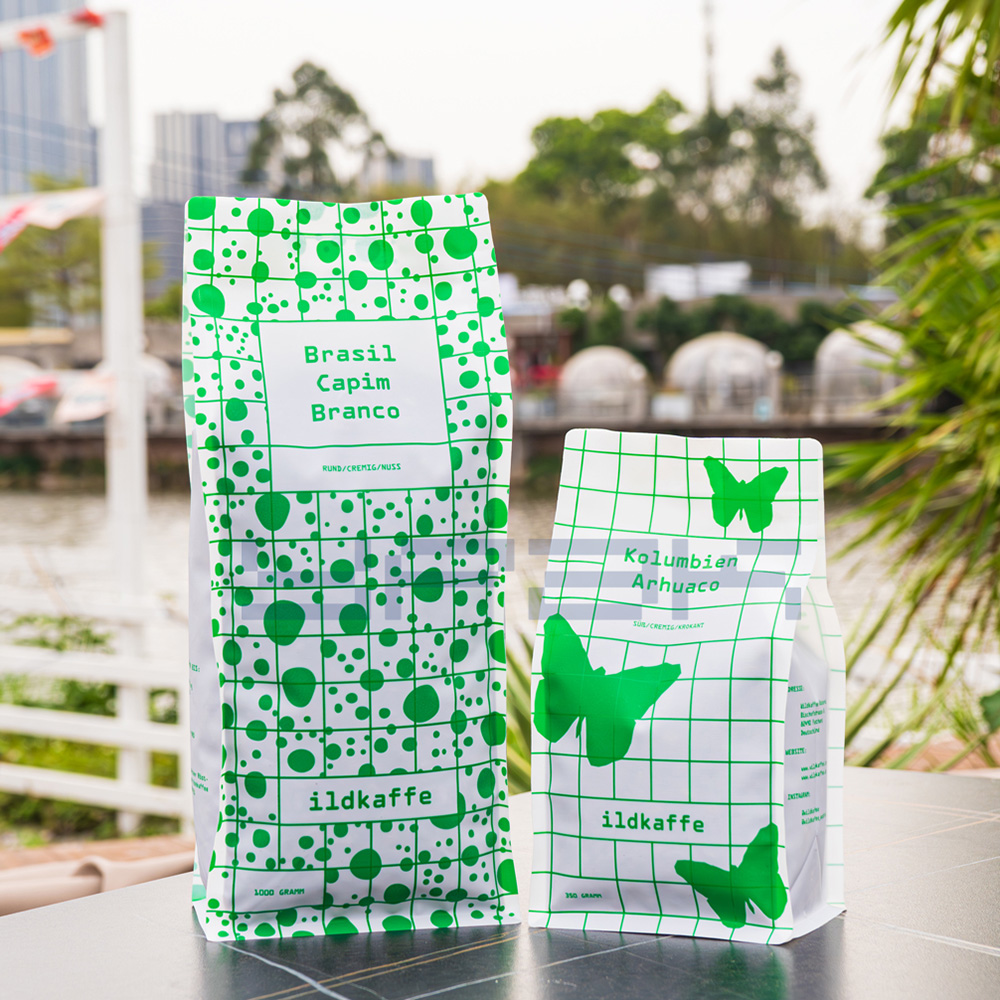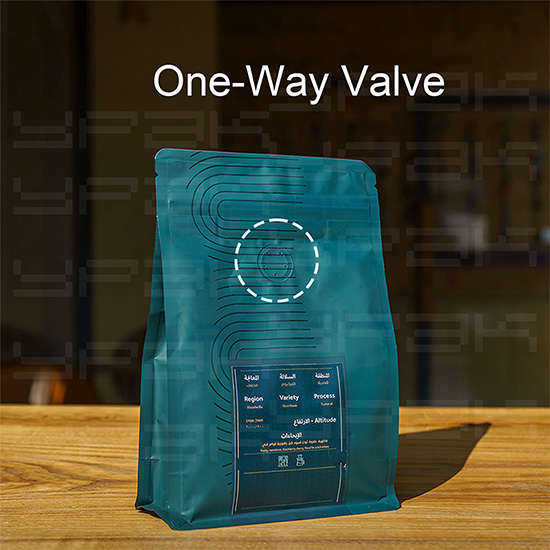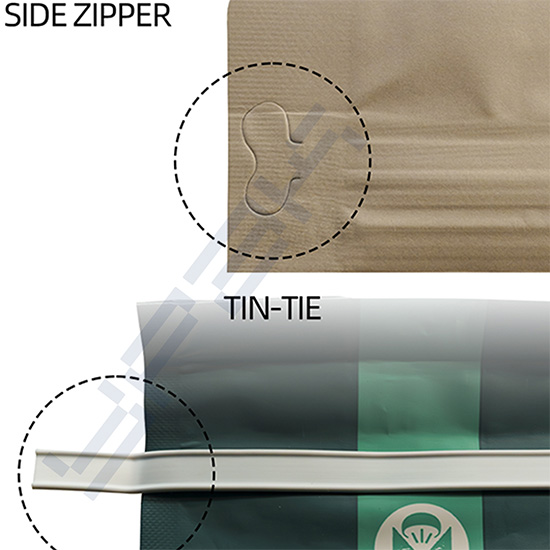The Comprehensive Manual for Selecting a Coffee Bag Provider for Your Brand
It is an exciting venture to be able to build or grow a coffee brand. You are focusing on the best beans to use. You are mastering the art of roasting. However, your packaging can make or break all that hard-earned sweat and blood you invested into it. It is also essential to have the right partner to undergo the process with.
This reading will simplify the process for you. We shall detail different coffee bags available such as stand-up pouches, and side-gusset bags. They will also discuss the materials used to manufacture them. These are all details to look for in a checklist. In the end, you will have the ideal coffee bag supplier who meets the needs of your brand.YPAK COFFEE POUCH possesses the expertise required to assist you with this.
The Significance of Your Coffee Bag Supplier Choice

It is not just about buying bags when choosing a packaging partner. It's a business decision that can either destroy the whole brand or make it. A good coffee bag distributor feels like an extension of your team. They are your partners in expansion.
Here are few reasons why the choice of your coffee bag supplier is crucial:
• Brand Personality: Coffee maybe the first product that customers notice on shelf. A bag that catches the eye and provides a quick introduction of the brand to the consumer helps to open the sale.
• Product Quality:This is the right kind of bag for you tea because it keeps your tea away from air, moisture, and light. This is good news because it means that your roasted beans will be not only fresh, but yummy!
• Aesthetics: A bag that conveniently opens and looks attractive results in a pleasant experience. This is the small but significant part in the road to customer loyalty.
• Supply Chain Efficiency: A good supplier is one you never need to worry about. You will never lose a sale or be held up on your deadline.
Start with Knowledge: Primary Coffee Bag Types
Before you start talking to a potential coffee bag seller, understanding the fundamentals is important. When you discover more about the various kinds of bags, you're going to be able to ask the perfect questions. This information allows you to select the right packaging that will work with your product and brand.
Bag Shapes: Locate Your Matching Design
The shape of the bag directly affects the way it is presented on a shelf. But it's also one that assists quite a bit of its overall operation. There are advantages and disadvantages of each type of shape.
Stand-Up Pouches: This is the clear winner in terms of popularity. The bottom fold is nice because it allows the pouches to stand up straight on a shelf and that’s great for visibility. The counter space can also be used to feature a product on the big room.
• Pro: Eye-catching on the shelf. Multiple sizes available.
• Con: More space may be required for shipping if using bulk.
• These all-rounder coffee pouches are commonly adopted by roasters.
Side-Gusset Bags: You won’t find a classic bag of coffee that isn’t this. They are "bricks" when clapped. This makes it great for packing and shipping as well. They are commonly lined and are sealed by an airtight tin tie closure or with plastic tabs.
• Pro: Very space-efficient. Cost-effective. Timeless look.
• Con: Not self-standing. Needs a tin tie or clip for re-sealing.
Flat-Bottom Bags (Box Pouches): The contemporary, high-end variety. It’s a combo of the features of top down and side gusset bags. It will not shimmy. The five branding panels are nicely done, and clean-cut.
• Pro: Outstanding stability. Maximum branding space. Premium look.
• Con: Generally the costliest type of bag.



Small Features with Great Impact
The little things on the coffee bags do make ALL the difference. These will preserve the coffee and help you use the bags conveniently.
• Degassing Valves: Freshly roasted coffee emits carbon dioxide (CO2). Therefore, a valve is a must-have feature. It allows for the escape of the gas without permitting the harmful oxygen entry. Quality one-way degassing valves in bags are what good producers offer to preserve your coffee.
• Re-sealable Zippers or Tin Ties: Convenience and ease of your customers is our #1 goal. Built-in zipper or tin tie can provide the function that they can close the bag after their first time use. That way coffee will stay fresh at home. The overall experience improves.


• Pre-cuts for Opening: These are very little discreet pre-cut in the top of the coffee bag. It allows you to easily open the bag cleanly without need for scissors. It’s a small gesture but tells the buyer that one cares for him.
Talk About Material: Coffee Bag Type Options

The substance of a coffee is as relevant as the shape of a coffee. And the thing you want “the best” is the one that’s going to give your coffee the best protection from your enemies: oxygen, moisture, and light. An experienced coffee bag supplier will also be able to help you make them.
Different types of materials offer various degrees of protection, expense, and environmental-friendliness. It is critical that all these layers are understood before deciding. Here is an overview of your most typical choices.
| Material | Barrier Quality | Sustainability | Best For... | Typical Cost |
| Kraft Paper (Lined) | Good | Varies by liner | Brands wishing for a natural, rustic look. | $ |
| Multi-Layer Laminates | Excellent | Low (Hard to recycle) | Brands needing maximum shelf life and protection. | $$ |
| Foil (Aluminum) | The Best | Low (Energy intensive) | The highest level of protection against all elements. | $$$ |
| Eco-Friendly (PLA/Compostable) | Good to Very Good | High (Industrially compostable) | Brands focused on sustainability and green values. | $$$ |
Kraft Paper: Some people love the neutral brown color of basic Kraft paper bags. But paper itself is not shielded from air, moisture or light. The bags should have an anti-abrasion liner inside them. Typically that’s plastic, or plant-based material. This forms a proper barrier.
Multi-Layer Laminates: The Swiss army knife of coffee bags is these bags. They consist of three to several layers. A pet bag may be used for its durability and custom printing capability. It is then laminated with VMPET or AL for barrier protection. Finally, it has a food-safe inner PE layer that can be heat-sealed.
Foil:A sheet of aluminum foil is the best barrier. It blocks light, oxygen and moisture. It’s the gold standard of preservation for the long term.
Eco-Friendly Options: This is already fast fashion in packaging. Studies show that people gravitate towards Eco surround the opponents who do not harm the environment by using recyclable material. One of the proposed solutions would be to use PLA, which is a type of plant-based plastic. This is applicable to composting sites. This is an option that is consistent with values of your brand. Just make sure you know and are educated on how they should be disposed of!
The Infallible Guidebook: How to Choose the Most Suitable Supplier for Your Coffee Bags

The journey of finding a trustworthy partner could be frustrating. We have quantified our experience in helping out hundreds of roasters by creating an essential checklist that you can use. So you can find a dependable coffee bag supplier suitable for your business.
1. Start by pinning down what you need. It is wise for you to know specifically what you need before communicating with anybody. What dimensions would you like the bags to be? What kind and material you prefer? How many bags do you need at the beginning?
2. Request Samples. Do not ever order large-scale production without viewing the sample product. A top supplier will be willing to send samples at no cost. You can test them with your own coffee. Check the size. Feel the material quality. Test the zipper and valve.
3. Inquire About Minimum Order Quantities (MOQs). This is especially important for new and small companies. Minimum order quantities vary between 500 and more than 10,000 bags. Find a vendor with minimums that align with what you can afford and store.
4. Understand Lead Times. Inquire as to the amount of time it takes to retrieve your bags. There is a big difference between in-stock bags and custom print bags. In-stock bags could take just days to ship. So when you create your own bags, they can take weeks to produce. Get ahead of the shortage.
5. Check Certifications. Your bags must be food-safe. They should provide you with evidence that their materials have passed food safety tests. If you are in the market for environmentally friendly bags, inquire about certifications, Say BPI when referring to compostability.
6. Evaluate Their Expertise. Does the supplier understand coffee? A legitimate coffee bag supplier is going to be a consultant. They can help you choose the best materials and features. They also help keep your individual roast safe. They make your brand pop!
7. Discuss the Customization Process. If you want custom printing, ask about their process. What kind of artwork files do they need? How do they handle proofing? A clear and easy process shows a professional operation. You can explore many coffee bag options here.
8. Read Reviews and Ask for References. Check out what the other coffee roasters have to say about them. Check online reviews. Request references you can contact from the provider. This is one of your absolute best resources for learning about their reliability and their customer service.
The Custom Coffee Bag Process Simplified

Ordering custom-printed bags for the first time can seem complex. A great supplier will make it simple. Leading suppliers who specialize in custom packaging solutions for the specialty coffee sector will guide you through each stage.
Here is a typical step-by-step guide:
Step 1: Consultation & Quoting. You tell the supplier what you need. This encompasses bag size, style, fabric, features, and quantity. From this, they provide you with an extensive quotation.
Step 2: Dieline & Artwork Submission. You then approve the quote, and the supplier sends you a “dieline." This may look like a flat template of your bag. Your artist places the artwork into this template. Then they return it in the proper format.
Step 3: Digital & Physical Proofing. The seller will provide a digital proof for you to review. They can send a printed proof for larger orders. This is your final opportunity to review for color, text or design errors before submitting your final approval.
Step 4: Production & Printing. Once you approve the final proof, your bags start being made. This involves printing the material. It also includes making the bags and adding elements such as zippers and valves.
Step 5: Shipping & Delivery. After production is finished, your coffee bags are packed into cartons and sent to your roastery.
Frequently Asked Questions (FAQ)
This varies greatly. There are a few suppliers who provide digital printing with MOQs in year 500-1000 range. This is great for startups. There is a good reason for that. Traditional print typically requires somewhere between 5,000-10,000+ units per design. What you need, therefore, is a coffee bag supplier that allows you plenty of room to grow.
Cost depends on many factors. These include size, material, cost, print colors, and quantity. A typical, non-deluxe stock bag might be less than $0.20 each. A multi-layer flat bottom pouch that is custom printed might be $0.50-$1.00+ each. Prices get a lot lower the more you order.
Definitely! Whole bean fresh roasted coffee must have a one-way degassing valve. Aromatic compounds will continue escaping from roasted coffee for anywhere from a few days to a few weeks. The valve allows this gas to escape and stops the oxygen from coming in. This process retains the flavor. It as well eliminates the secondary fact that your bags burst on the shelf.
Bags that are recyclable are often made with only one type of plastic. They can be reprocessed at special plants. Films for compostable bags are commonly produced from PLA. They are made to decompose into organic matter in industria compost atmosphere. Find out what your local facilities are equipped for in both categories.
Lead times can be anywhere from the time you approve your final art. Digital printing is frequently quicker, say 4-6 weeks. Larger, traditional print runs will take 8-12 weeks or longer. Always, verify the estimated delivery date with your coffee bag provider before you decide to order.
Post time: Oct-23-2025







